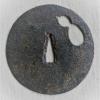-
Posts
6,361 -
Joined
-
Last visited
-
Days Won
21

ROKUJURO replied to MorganRedstone's topic in Nihonto

ROKUJURO replied to George KN's topic in General Nihonto Related Discussion

ROKUJURO replied to Nazar's topic in General Nihonto Related Discussion

ROKUJURO replied to George KN's topic in General Nihonto Related Discussion

ROKUJURO replied to Burntcicada's topic in Wanted to Buy

ROKUJURO replied to yoda's topic in Military Swords of Japan

ROKUJURO replied to Lareon's topic in Tanegashima / Teppo / Hinawajū

ROKUJURO replied to Lareon's topic in Tanegashima / Teppo / Hinawajū

ROKUJURO replied to kleber75's topic in Translation Assistance

